‘Pachinko’ Showrunner Soo Hugh Wants To Bring More Asian Stories To Our TVs
Hugh talks about her new program for writers interested in telling Asian and Pacific Islander stories, and her love of epic tales about "indomitable people."
By
Marina Fang
Mar. 21, 2022, 05:45 AM EDT
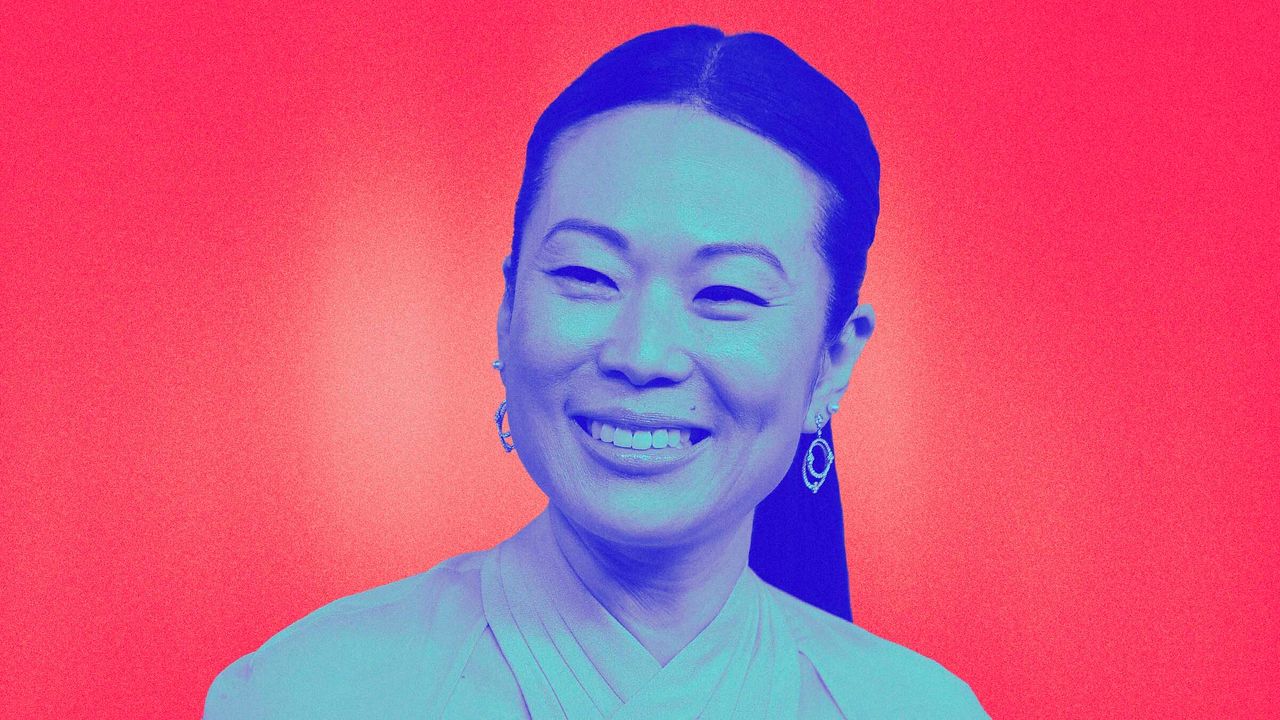
Soo Hugh, the showrunner of "Pachinko," sees the series as an exploration of different generations in dialogue with each other.
ILLUSTRATION: DAMON DAHLEN/HUFFPOST; PHOTOS: AP/GETTY
Growing up, Soo Hugh loved watching epic tales, movies like “Lawrence of Arabia” and “The Godfather.” Today, as a TV writer, creator and showrunner, she’s still drawn to those kinds of ambitious stories, such as her stunning adaptation of Min Jin Lee’s historical epic novel “Pachinko.” Premiering on Apple TV+ this Friday, the eight-episode series spans nearly a century, features a star-studded international cast, is told in three languages and was filmed on two continents.
When approaching adaptations, Hugh starts by thinking about whether there’s “a thesis statement that can be told visually,” and if there are “blank spaces” that suggest something may have “been left out,” as she explained in a recent interview. “If there’s anything that’s been left out of the book that is just undeniable, then I know I have something.”
ADVERTISEMENT
“With ‘Pachinko’ ― because man, it’s such a long period of time ― the blank spaces were really, really exciting,” she continued. “‘Huh, I wonder what happened in these years. Oh, I wonder what happened to this person who disappeared.’ Often the ‘I wonder...’ grows a show. That really inspires the eureka moment.”
Lee’s extraordinary novel follows multiple generations of a Korean family, whose matriarch, Sunja, immigrated to Japan as a young woman during the Japanese occupation of Korea in the early 1900s. Each generation encounters racial and class discrimination in Japan while trying to survive and carve out their identity.
What Hugh sees as the show’s thesis statement is that every generation, whether directly or indirectly, is in dialogue with the ones before and after them. That puts some of the show’s primary changes from the book into perspective. For example, while the book unfolds chronologically, the series starts at both the beginning and the end. The first episode opens in 1915, with Sunja’s mother Yangjin (Inji Jeong), pregnant with Sunja, hoping for her daughter’s survival after having three babies who didn’t live past infancy. We then flash forward to 1989, when Sunja’s grandson Solomon (Jin Ha), an investment banker in New York, gets passed over for a promotion. He returns to Japan to work on a potentially career-changing real estate deal at his bank’s Tokyo office, and visits the now older Sunja (Oscar winner Youn Yuh-jung). The series moves back and forth between time periods, showing the parallels between each character and generation.
“Every generation in this dialogue is either refusing what’s been given to them or accepting of it,” Hugh said. “That’s a complicated way of saying that we are all very much following the footsteps of those who have come before us. The question is some people want to veer on their own paths, and don’t want to follow in those footsteps, and some people do. In this show, I wanted to figure out who are the characters who understand that those footsteps were made with great sacrifice and love, and who are the characters who say, ‘No, I tread my own path.’ That was really intriguing.”
ADVERTISEMENT
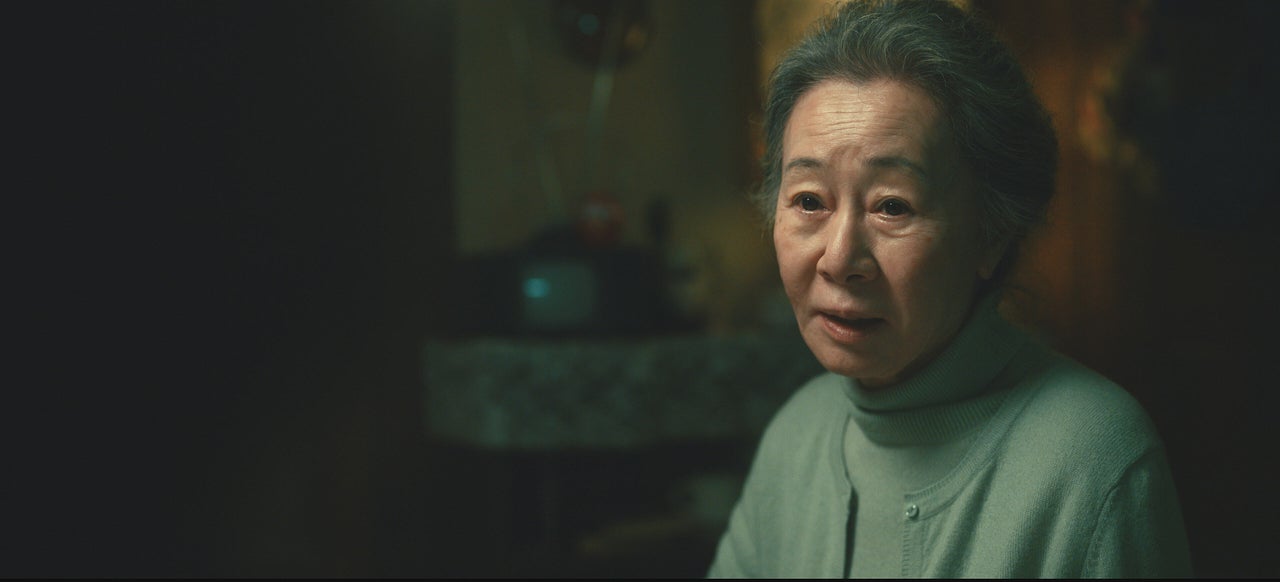
Oscar winner Youn Yuh-jung as older Sunja in Apple TV+'s "Pachinko."
APPLE TV+
For a long time, it was hard for Hugh to picture telling these kinds of big stories for a living. Growing up in the 1980s and early ’90s, “I watched a lot of movies. I was a classic latchkey kid, so the TV was our babysitter,” she said. “I remember ‘The Godfather.’ I was way too young when I watched it, so I was totally blown away by it and being like, ’I want to do that, but I don’t know what that is.’ I didn’t even know that there were screenwriters.”
It took her many years, and several false starts and career pivots, to figure out how to turn that pipe dream into a livelihood. Informed by her experience of having to carve out her own path, Hugh recently launched the Thousand Miles Project, an incubator program for writers interested in telling stories about the Asian and Pacific Islander diaspora. She created the program as part of her development deal at Universal Content Productions. It will select up to 20 writers or writing teams to participate in workshops about the nuts and bolts of developing a story idea for TV and navigating the industry. Following that, three of the participants will advance to a 24-week development lab, where they’ll get paid to develop a pilot script, with the hope that all three shows will get made. Applications are open through March 31, and the program will begin in June.
With each of the program’s components, Hugh’s goal is to make the process of developing a career in TV “not feel so obscure and impossible.”
“Everyone’s pathways are so different in this industry. It should be both encouraging but also daunting at the same time, that there is no set path to follow,” she said. “I Googled, just out of curiosity, ‘how to get into film,’ ‘how to be a screenwriter,’ ‘how to be a film director.’ There’s some great information out there, but there’s also some crazy information out there. I tried to picture myself at 15, 16 years old, Googling those things, and it would still feel far away from me.”
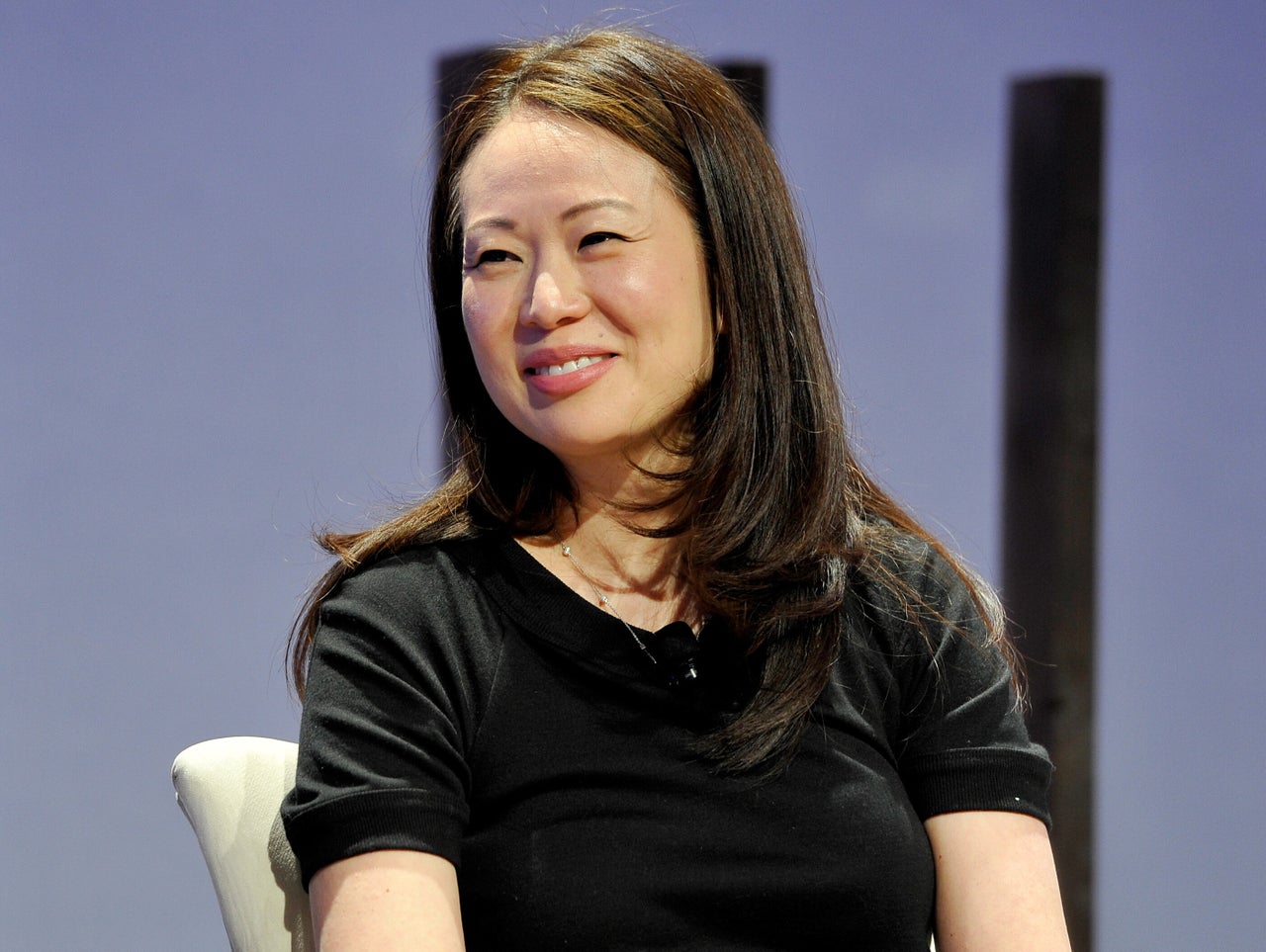
Hugh speaking at a screening and panel in 2018 for the first season of AMC's "The Terror," where she served as co-showrunner.
JOHN SCIULLI VIA GETTY IMAGES
Before the days of the internet, it felt even farther away. After becoming obsessed with movies as an adolescent, Hugh took film classes in college. However, a lot of what she learned felt like “much more of an experimental art school at best.” After graduation, an actual career in film still seemed abstract and unattainable to her. To pay her New York City rent, she worked at a marketing and advertising firm, while writing on the side.
“I wasn’t a good writer,” she said. “I didn’t know how to do it, per se. I finally took a leap and went to film school. That was my way of getting to L.A.”
It’s not an approach she recommends for everyone. For one thing, she’s still paying off her $150,000 in student loans. Also, she wants to make it easier for people of all ages and career backgrounds to envision working in film and TV, another goal of the Thousand Miles Project.
In her mid-20s, when she decided to quit her marketing job and go to film school, “I had this feeling that if I wasn’t going to do it in my 20s, it was never going to happen,” she said. “I knew it was one of those ‘it’s now or never’ moments, which isn’t true. There should be no age requirement. This shouldn’t be an industry that only a 20-year-old can jump into. This should be an industry where there’s so many people with different voices, that people with second or third careers can have a story to tell.”
By the time Hugh got her MFA from the University of Southern California’s prestigious film school in 2006, she’d gotten more experience and exposure, but she still faced a new round of uncertainty. She made shorts and commercials, but it was hard to make ends meet as an indie filmmaker and freelancer. She applied for entry-level jobs, such as being an assistant. But she faced the catch-22 of being “under-overqualified”: having multiple degrees and a prior career, but lacking the connections and direct entertainment industry experience often needed for being an assistant.
ADVERTISEMENT
Eventually, she found a way in as an assistant to a producer, which gave her a window into how scripts get developed. Over time, she moved up the ranks as a TV writer. She has worked across many genres, including writing on the CBS series “Under the Dome,” a Stephen King adaptation executive produced by Steven Spielberg; creating ABC’s “The Whispers,” adapted from a Ray Bradbury short story; and serving as co-showrunner on the first season of AMC’s acclaimed horror anthology series “The Terror.”
When “Pachinko” was published in 2017, Hugh’s then-agent, Theresa Kang-Lowe, who’s now a producer, sent her the book. Hugh knew it was an exquisitely crafted story, but didn’t know whether she was mentally ready to take it on after “The Terror.”
“I remember thinking, ‘Oh my goodness. This is massive.’ The idea of jumping into another huge production, an international production especially, wasn’t something I was very eager to sign up for,” she said. “But when I picked up the book and read it, it’s one of those experiences where the images and the characters and the voices and the sounds all just really came alive to me.”
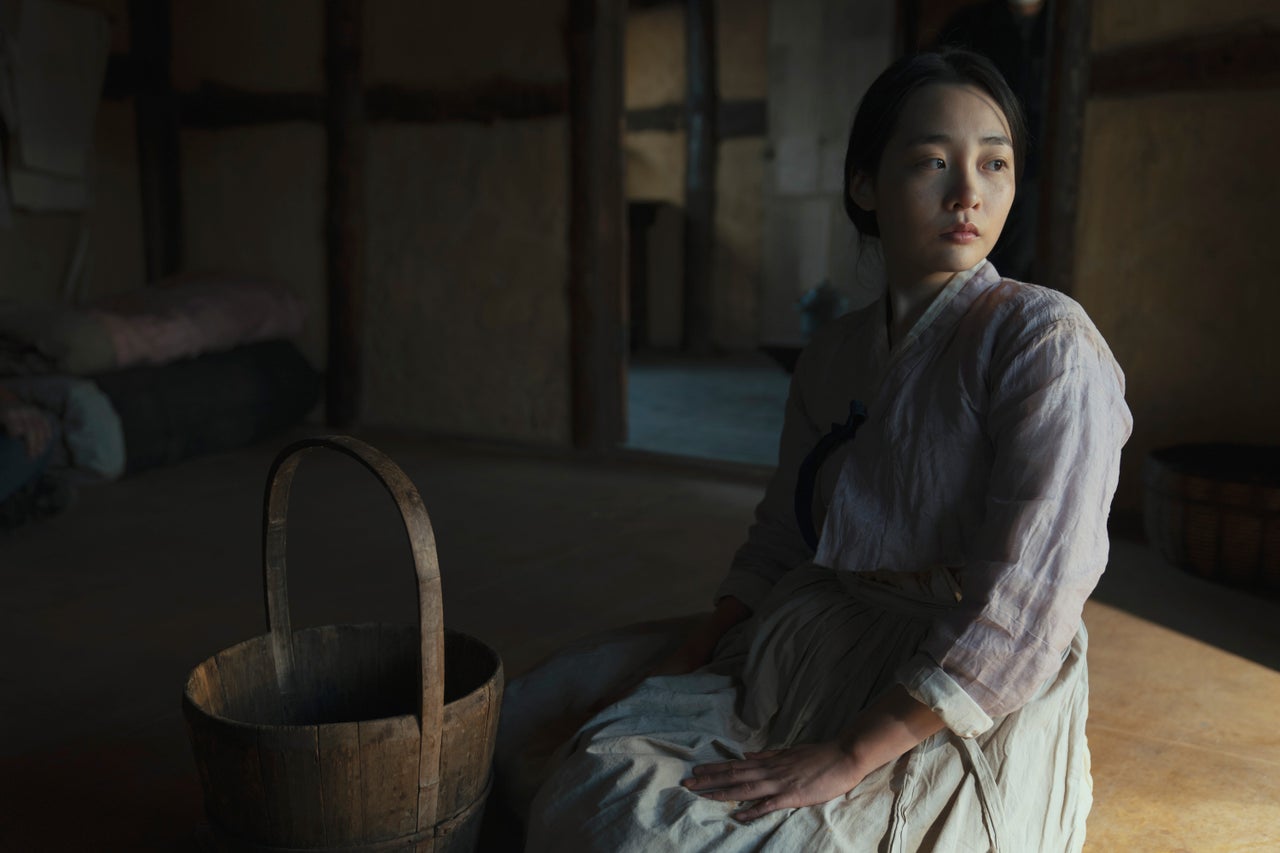
Minha Kim as young Sunja in "Pachinko."
APPLE TV+
For the series, Hugh assembled an extraordinary cast and crew, including directors Kogonada and Justin Chon, who each directed half of the episodes. Each of their distinctive and stunning visual styles is on display. One of the show’s eye-catching elements is the vibrant and joyful opening credits sequence, which features the main actors dancing in the titular pachinko parlor, owned by Sunja’s son Mozasu. Perhaps taking a page from those epic tales she loves, Hugh said she writes opening title sequences directly into all of her scripts. She laments when TV shows and movies do away with them for time or budgetary reasons — which almost happened on “Pachinko” too.
“I really mourn them, so I write them and show everyone: ‘We are going to do a big opening sequence,’” she said. “The original version that’s in the script is the same idea of people being at the pachinko parlor. But the original song was the Rolling Stones song ‘Out of Time,’ which was a fortune, it turned out. And then because of our crazy schedule, we couldn’t figure out a way to fit the title sequence shoot, so at one point, it was dropped from the show, and it just was eating at me. I was like, ‘I can’t drop this. We have to figure out a way. We have to figure out a way.’”
At last, toward the end of the show’s arduous shoot, which took place across two continents during a pandemic, the production team squeezed in the sequence on a weekend.
“It was so much fun. I had the radio playing. Because I didn’t know what song we were going to have in the opening titles quite yet, because we couldn’t get the Rolling Stones song due to money, I played different songs for different actors,” she said. “The part where Steve [Sanghyun Noh] and Minha [Kim] are dancing together, Sunja and Isak, I played ‘Californication.’ Then for [Lee] Min-ho, I think I played ‘SexyBack,’ and for Yuna, the little Sunja, I played ‘How Far You’ll Go’ from ‘Moana.’ It was so much fun, those two days. Everyone just let their hair down.”

The cast of "Pachinko" (from left to right: Jin Ha, Youn Yuh-jung, Kaho Minami, Jimmi Simpson, Anna Sawai, Minha Kim, Lee Min-ho, Jung Eun-chae, Steve Sanghyun Noh, Inji Jeong and Soji Arai) at the show's Los Angeles premiere on March 16.
TOMMASO BODDI VIA GETTY IMAGES
Hugh has several other projects in the works, including writing a reboot of the Disney sci-fi adventure movie “Flight of the Navigators” and producing both an adaptation of “Wisconsin Death Trip” and a forthcoming film written by Pulitzer Prize-winning playwright Lynn Nottage and documentarian Tony Gerber — plus more endeavors that have yet to be announced. If there’s an overarching theme to her work, it’s stories told on a grand scale.
“The word I constantly use to describe the shows, I use the word ‘indomitable,’” she said. “I want to make shows on indomitable people. They don’t have to be superheroes. They don’t have to be geniuses. They just have to be people who have the will and courage to face something head on. I’m attracted to these people who take on larger-than-life paths.”
“When I think of Sunja, to do what she does, to live during the war, to live during a century, and to bring a family forth, feels like such an epic and indomitable journey,” she added. “I love, love big, big stories.”
RELATED...
24 TV Shows We're Looking Forward To In 2022
Asians Made Huge Strides At The 2021 Oscars. This Group Wants To Ensure It Wasn't A Blip.
How Latina TV Creators Are Building 'Sisterhood' To Make Sure Their Stories Get Told
TV Diversity Is Improving On Screen. Behind The Camera, It's Still Mostly White And Male.
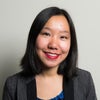
Marina Fang
Senior Culture Reporter, HuffP
No comments:
Post a Comment